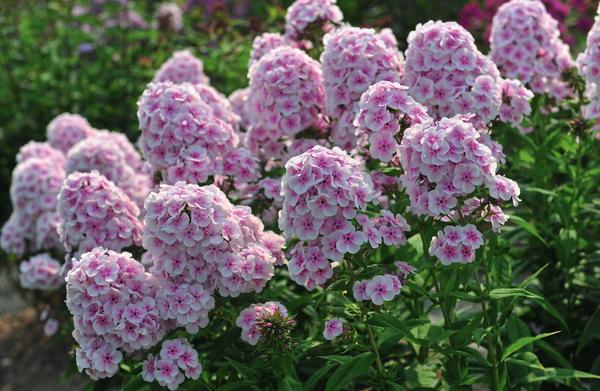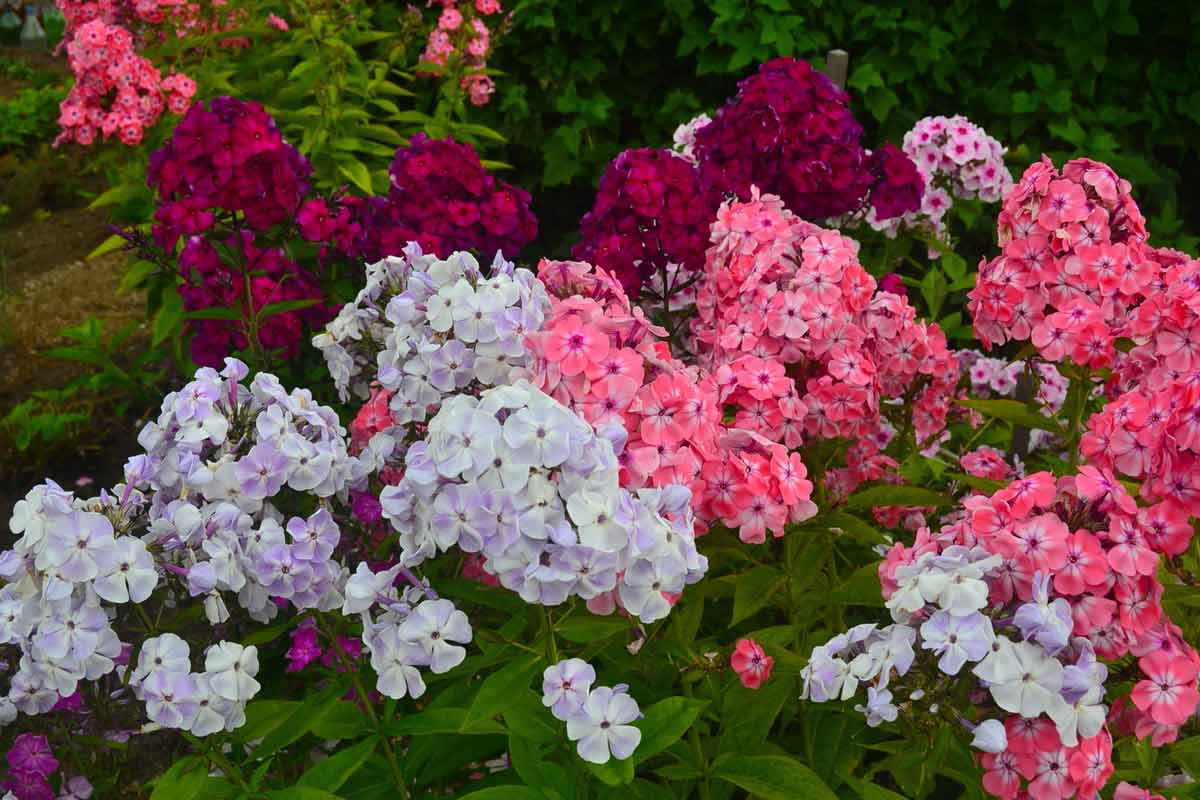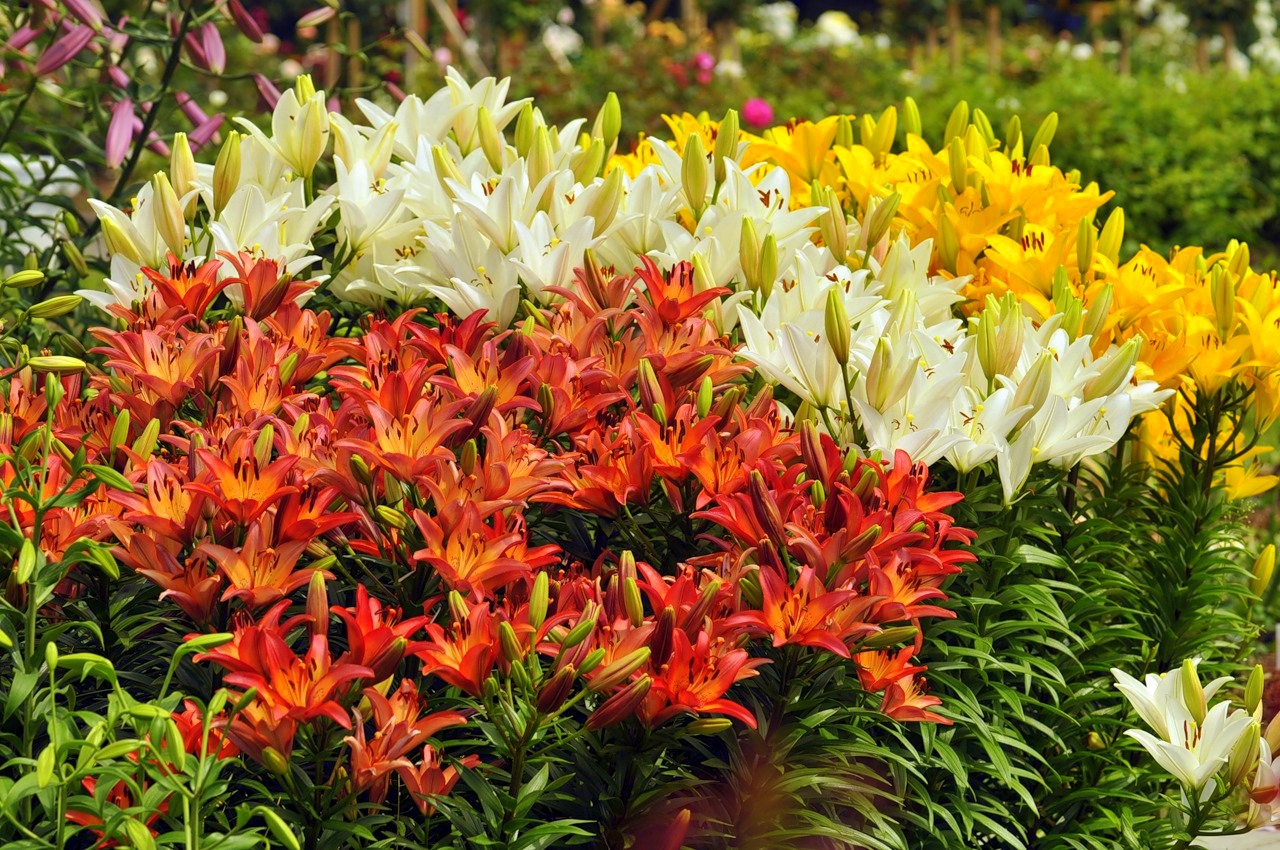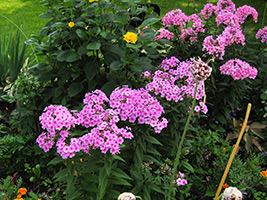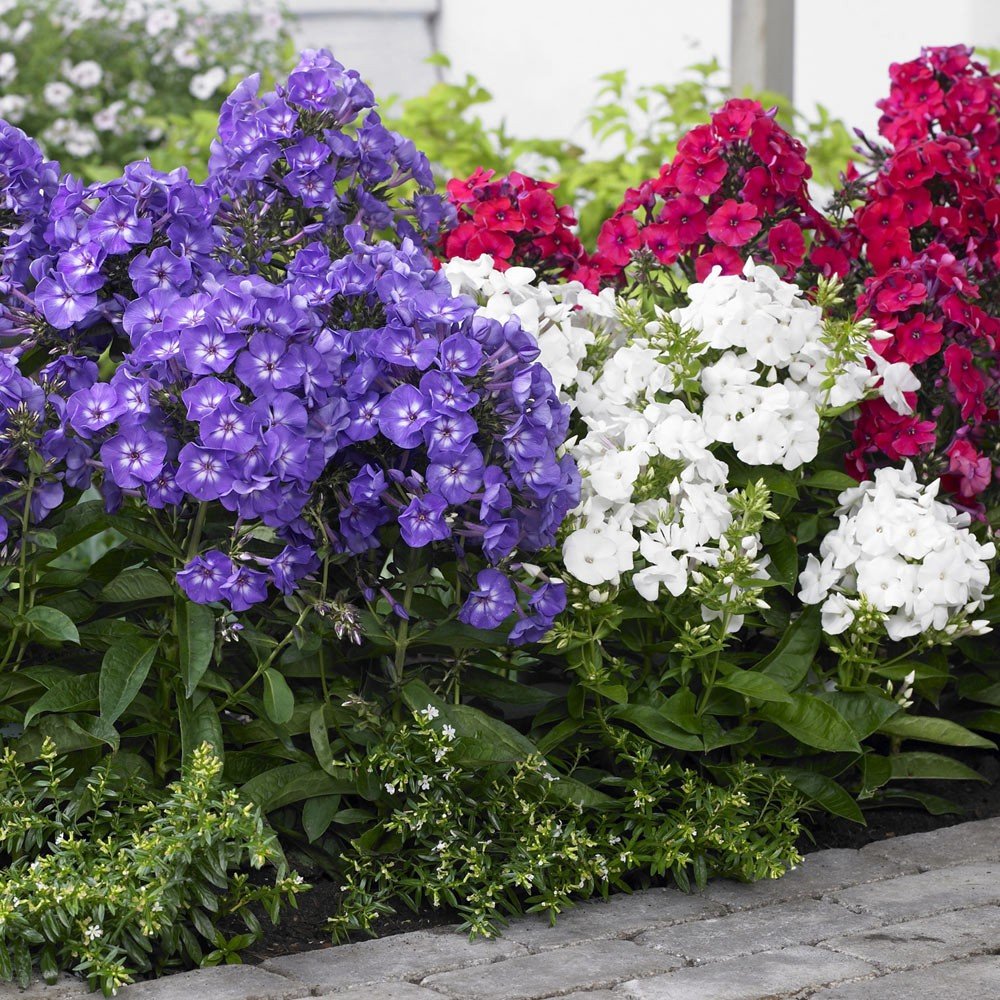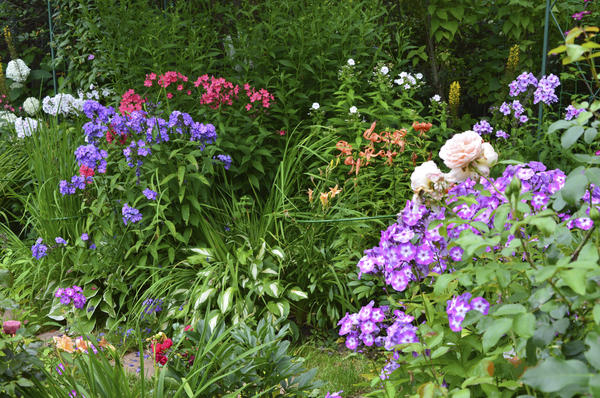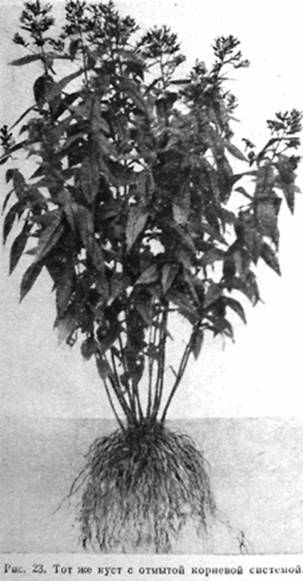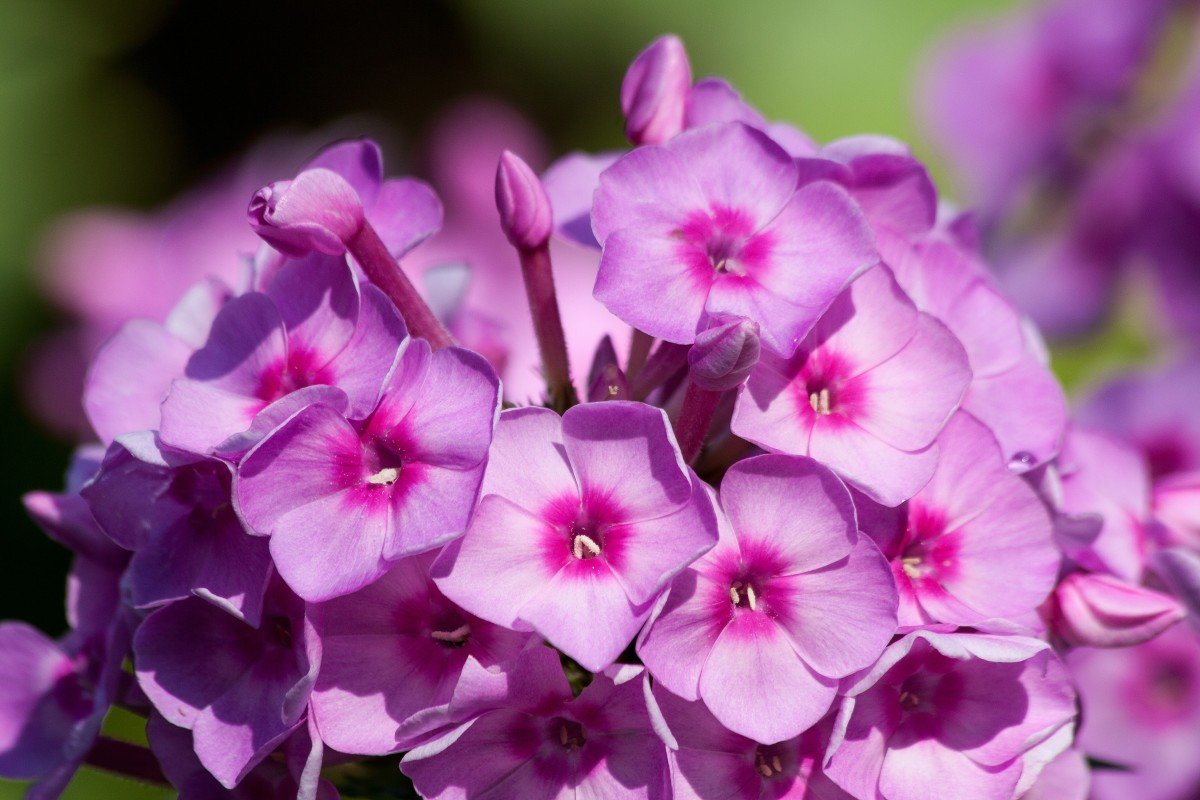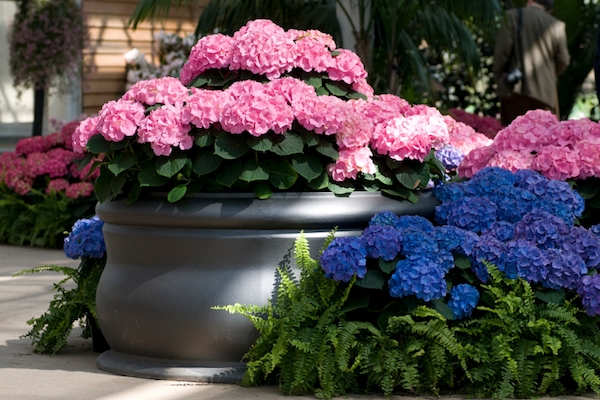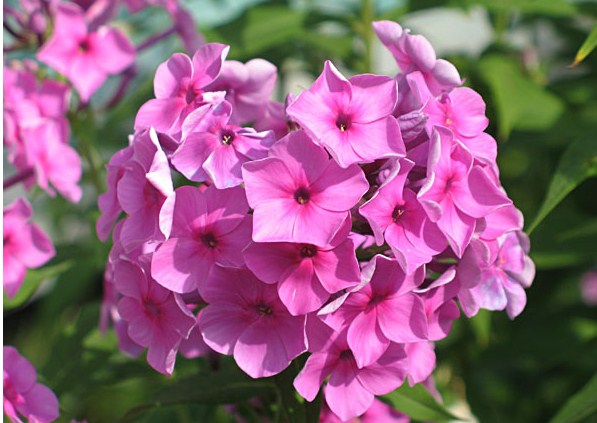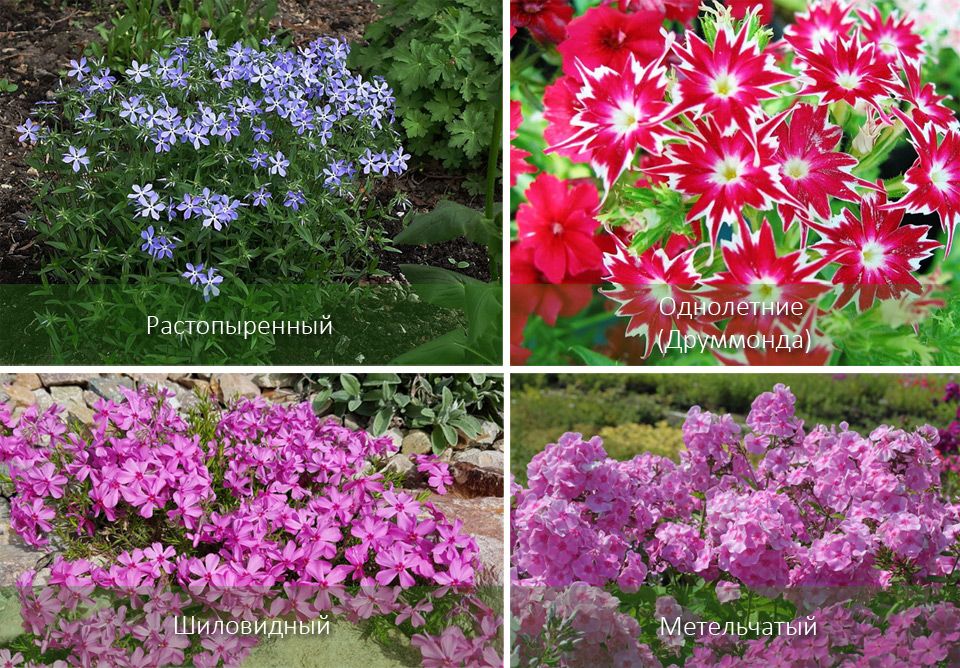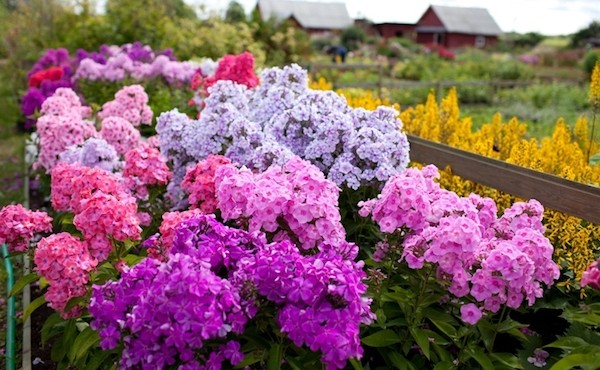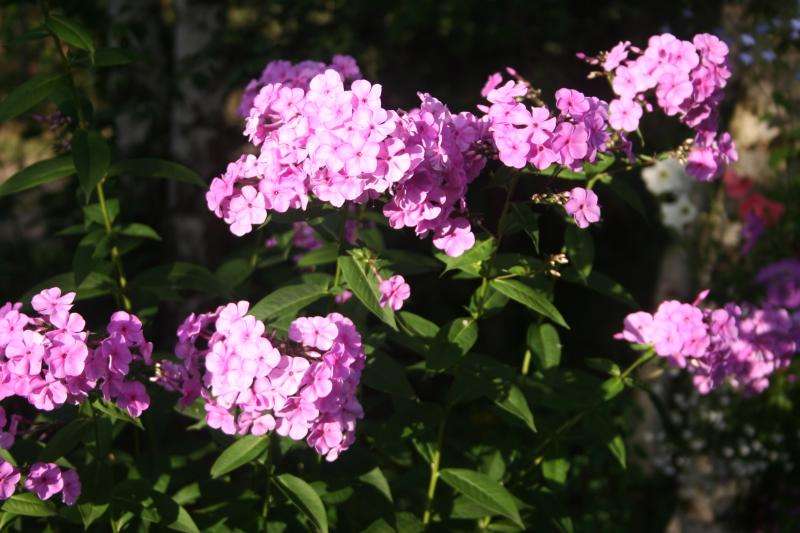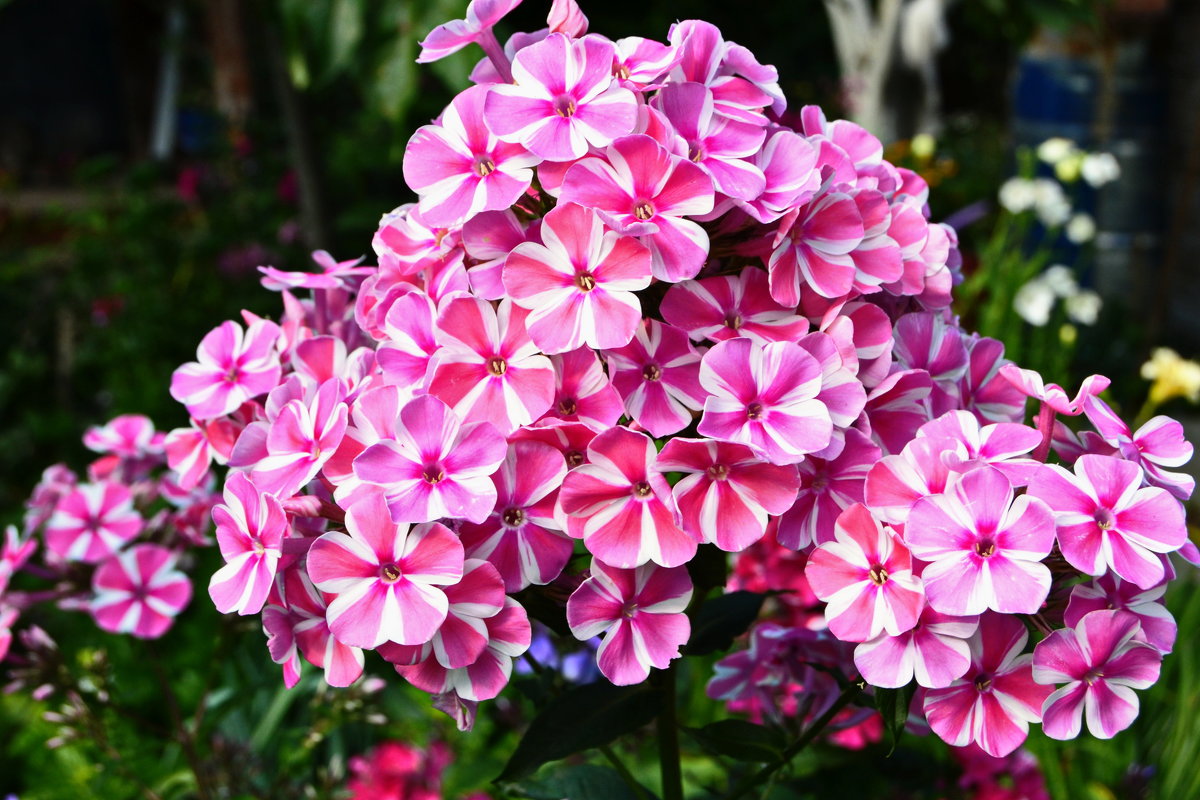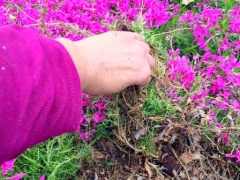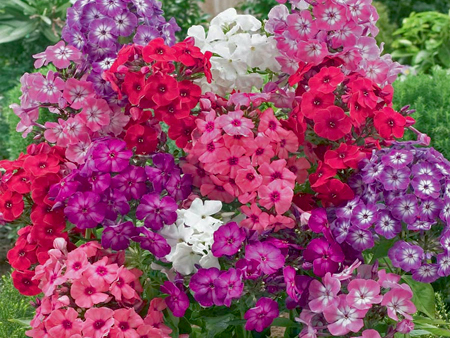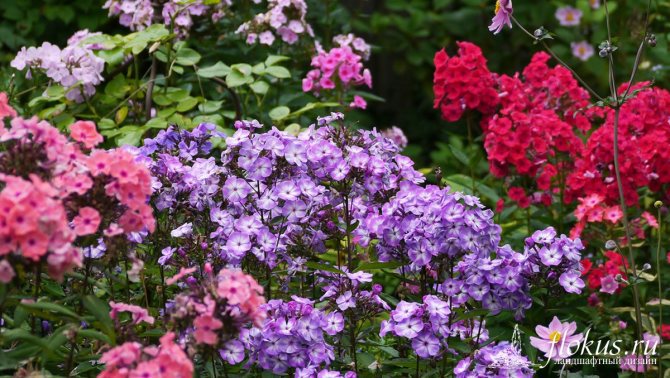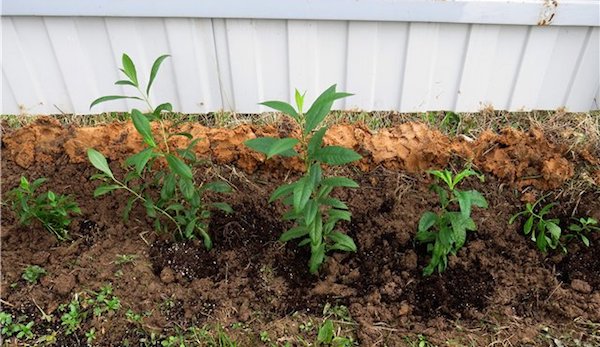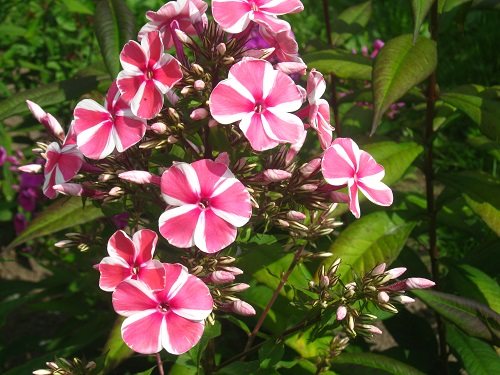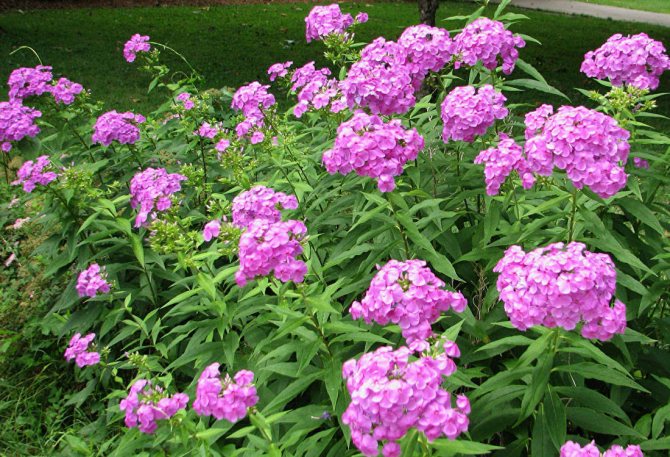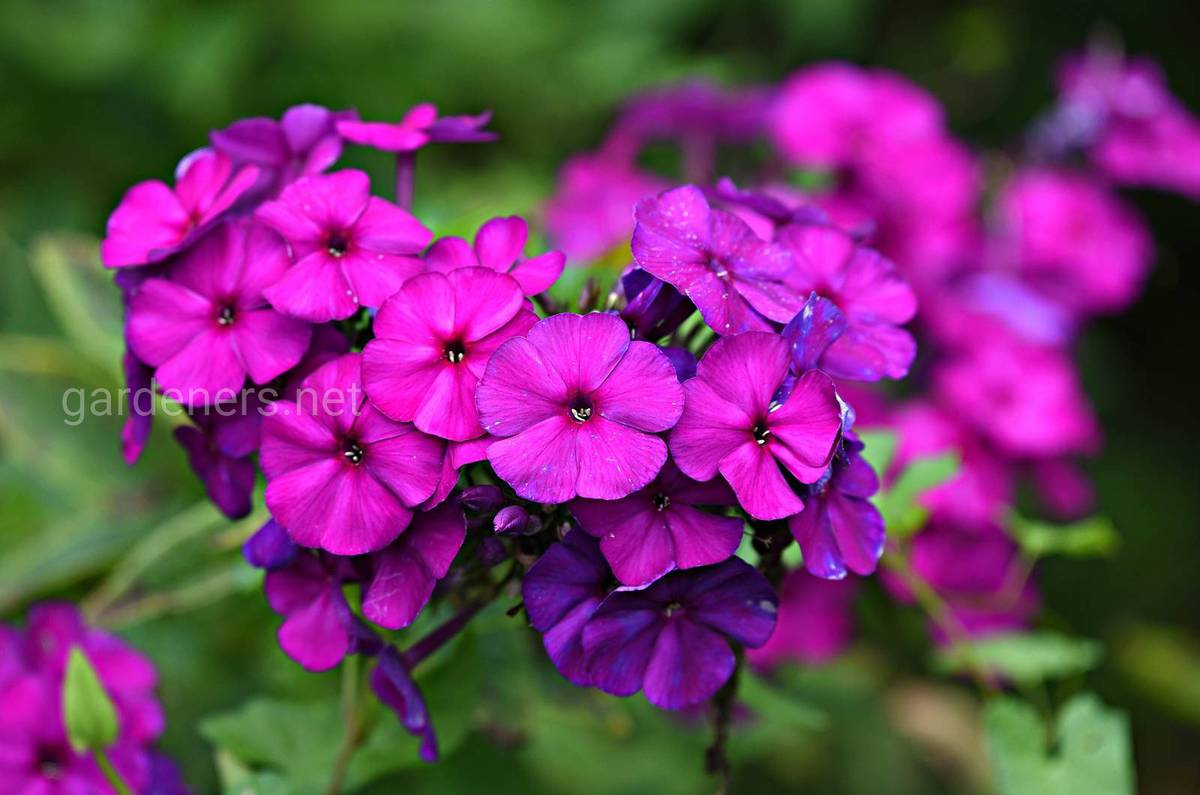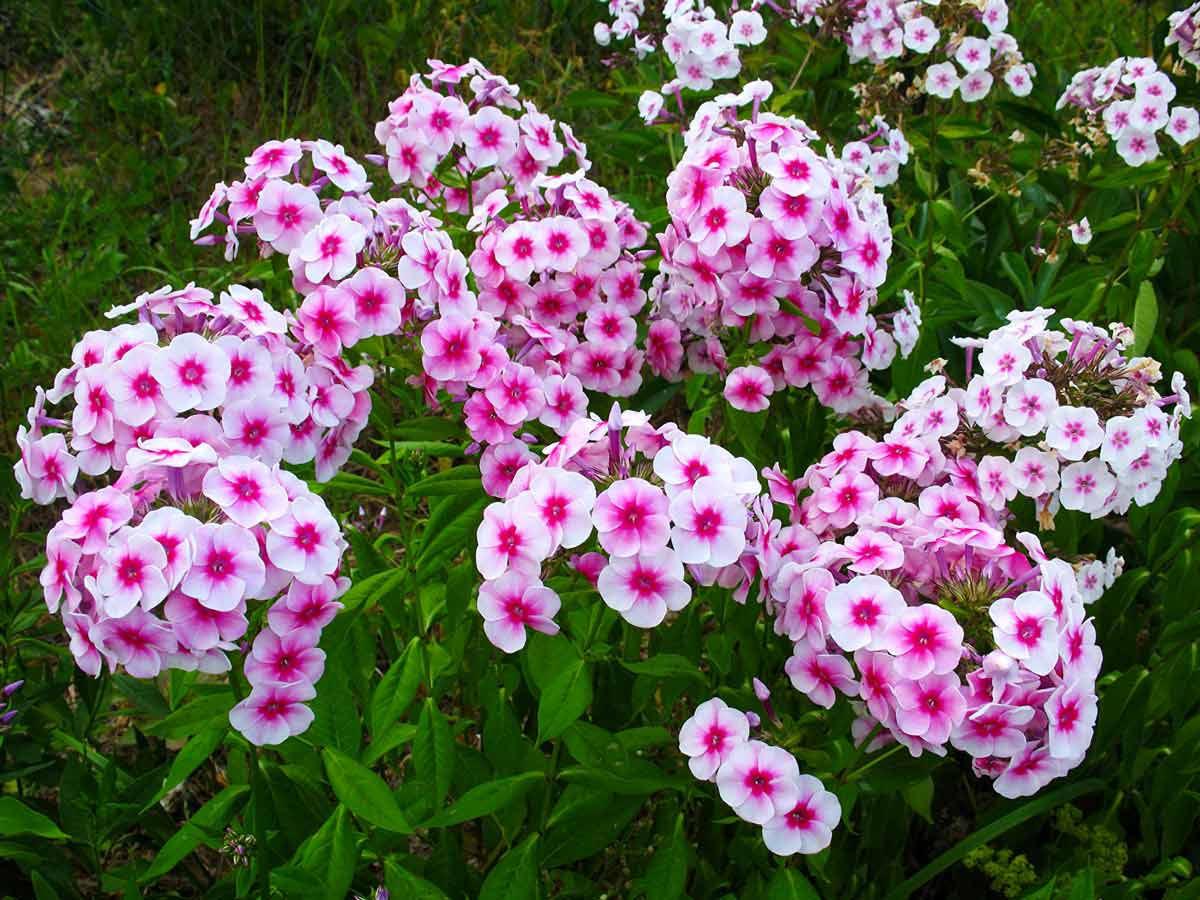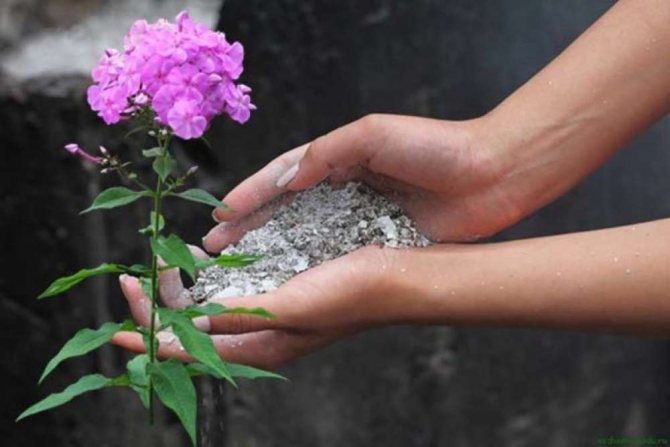Phlox transplant. When to transplant phlox.
Why transplant phlox?
Phlox, like all garden plants, flowering or bearing fruit in the same place from year to year, gradually degenerate. Flowers and their inflorescences become smaller, the turgor of the leaves during the heat begins to fall, the shoots are attached. When young bushes are still blooming profusely, the old ones are already beginning to fade and turn yellow.
The soil in the flower beds is also gradually depleted - top dressing cannot always make up for the lack of nutrients. Pathogens of specific diseases and pests accumulate.
To avoid all this and prevent phlox degeneration, it is recommended to rejuvenate them no later than six years later. The rejuvenating effect is obtained after dividing old, densely growing bushes into separate parts and replanting them to a new, specially prepared place.
When to transplant phloxes?
It is best to plant phloxes in the fall, when their growth is almost over, and not in the spring. This is due to the fact that they, like some other flowering crops, prefer a "cold start". Their roots begin to grow immediately after the snow melts, even during cold weather. And if you damage them at this time, then flowering during the season will no longer be obtained. For a spring transplant, it is very difficult to catch the very moment when the ground has already thawed, and root growth has not yet begun.
But in the climate of the middle zone, it is often the spring transplant that is recommended. The reason is simple: insufficiently rooted bushes risk dying from the cold, especially if the winter is little snow. In addition, there are no stems that can break during transplantation in early spring. In the fall, they have to be shortened by at least a third - they cannot be completely cut off, so as not to deprive the plants of nutrition through the leaves. It will be possible to remove the stems only after the onset of frost and drying of the foliage.
In fact, phloxes can be moved to another location even in summer, when they are blooming. Only this must be done very carefully, leaving as large a clod of earth as possible on the roots. But the separation of the bushes, in this case, will have to be abandoned.
Where to transplant?
The health and rapid rooting of transplanted phloxes depends not only on weather conditions and accuracy of movement, but also on the condition of the soil. Wild relatives of these flowers live in warm temperate climates. Their favorite places are forest edges, meadows and river floodplains with loose and moist soil containing a large amount of organic remains. Therefore, the ability to water often is one of the prerequisites when choosing a phlox planting site. Even close-lying groundwater does not save them from drying out in hot weather. Another component of growing success is soil fertility.
Constant illumination is not necessary - phloxes can grow in partial shade. It is even better if they are protected by a light shade during the hottest daytime hours. Again, snow accumulates faster in these places in winter, saving the roots in the soil from freezing. But trees with a superficial root system are not suitable neighbors for these flowers.
The place to move must be prepared in advance: in the fall, if a spring transplant is planned, and in the summer, if an autumn one. Having dug up the soil and carefully selecting weeds from it, they apply organic and then mineral fertilizers. It is advisable to take at least a bucket of compost or rotten manure per square meter, 200 grams of ash, 30 each grams of ammonium nitrate and potassium salts, add about 50 grams of superphosphate.All this is mixed with the ground at a depth of 15 cm, since most of the roots of phlox are located there.
The feeding area for the normal development of the bushes is 35 to 50 cm in diameter. Only with such a planting will they be able to grow in the chosen place for a long time.
.
Flower bed preparation
The soil should be sufficiently loose and fertile. If the site is on loam, it is recommended to add river sand or crushed peat to the flower garden. They will enhance the drainage properties of the earth and provide constant moisture access to the roots.
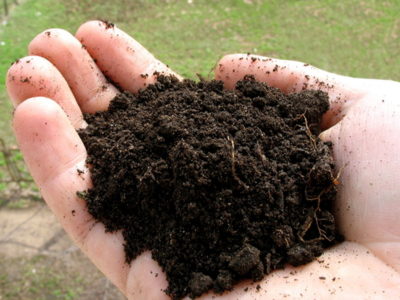
But in too loose soil, phloxes will not be able to gain a foothold. Sandstone needs to be made heavier by adding a fertile layer of turf or clay. In order for phlox to have enough nutrients, compost or rotted manure must be added to the grooves prepared for transplanting flowers.
Fertilizer consumption should be 1 bucket per 1 m². Some phlox experts recommend mixing the base material with wood ash. For 1 adult bush, 200 g of combustion residues is enough. The properties of this organic fertilizer not only improve the structure of the soil, but also help to increase the protective properties of the plant and make it resistant to various diseases.
In addition to natural feeding, mineral compounds with a high content of nitrogen, potassium and phosphorus will not be superfluous. These are the main components necessary for the normal development of any plant. Usually urea or ammonium nitrate is used, superphosphate and potassium sulfate... When using industrial types of fertilizers, you must strictly follow the instructions. This is the only way to hope for a good result.
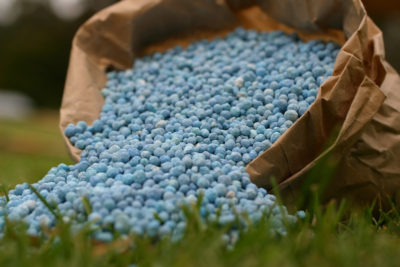
Phosphorus will contribute to the development of the root system, which is very important when transferring a culture to a new place. Nitrogen will help build green mass faster, which is involved in the process of photosynthesis.
Potassium is responsible for the carbohydrate metabolism of the plant and its nutrition.
All fertilizers must be placed in the hole no more than 15 cm. Phloxes immediately after transplanting are distinguished by a weak root system, so the flowers will not be able to extract useful substances from a great depth.
When to replant phlox, in spring or autumn?
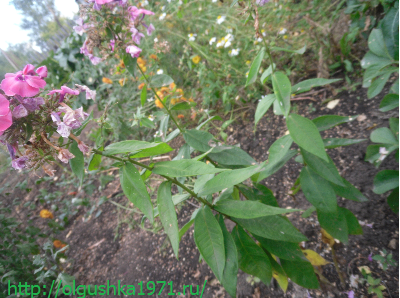 As I already said, phloxes tolerate transplantation well. They can be planted even in the summer in a blooming state, but this is if there is an extreme need.
As I already said, phloxes tolerate transplantation well. They can be planted even in the summer in a blooming state, but this is if there is an extreme need.
Spring is a good time to transplant, because the soil still has a lot of moisture and the air is cool and damp. But there is one "BUT". Phlox buds wake up too early and it is advisable to transplant them before that time. And in some regions, like, for example, in Siberia, in April there is still snow and the ground is too cold for transplanting.
That is why I chose the autumn transplant. It is carried out in early to mid-September, so that the roots have time to grow in a new place and the flower does not die out in winter.
What is needed for transplanting phlox
Even such undemanding colors need prerequisites.
- A good spot is sun or partial shade, not too damp. Phlox loves moisture, but will not grow in place with stagnant melt or rainwater.
- Space, leave a large enough distance between the bushes, because the flowers will grow in one place for more than one year and will grow. Leave 50 centimeters between them.
- The soil is light, loose, better neutral. On clay soil for planting, you need to add sand and humus. Add peat to the hole when planting.
- Fertilizer is mandatory when planting, phloxes love organic matter, so add good compost, a glass of wood ash and a complete complex fertilizer. Do not forget to mix everything well with the soil and only then place the plant in the hole.
- Watering after planting is required. Until the plant settles, the soil should be moist.
After you dug the bush, you need to check all the roots, too long can be cut off.If you need to divide the bush, it is better to do it with a sharp knife, the separated shoots, if necessary, need to be washed in water and checked for diseases.
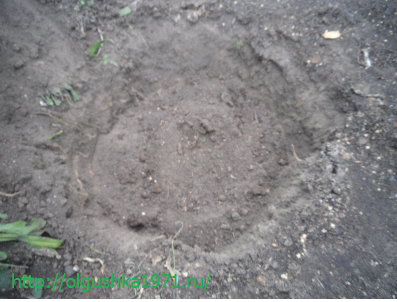 After the bush is planted, sprinkle it with soil and water it immediately so that all voids are filled with earth. From above it is good to mulch the flower with humus or compost. After planting, prune the inflorescences so that the plant does not waste energy on the maturation of the seeds.
After the bush is planted, sprinkle it with soil and water it immediately so that all voids are filled with earth. From above it is good to mulch the flower with humus or compost. After planting, prune the inflorescences so that the plant does not waste energy on the maturation of the seeds.
There is no consensus on when to transplant phlox in order to least harm the plant. These representatives of the cyanotic family have long become one of the most popular flowers in Russia. They are used to decorate city flower beds and personal plots.
In nature, this decorative culture can be found often. Wild phloxes usually hide in the shade of trees at the edges of forests and in floodplains. Plants prefer a temperate climate and high humidity. They are quite unpretentious and easily propagated by seeds and cuttings.
Full flowering of a culture in one place is possible within 5-6 years. Then the root system of phlox grows strongly and interferes with the normal development of shoots and buds. To give the plant the opportunity to play again with all the colors, it must be transplanted. Relocation is stressful for the culture. It promotes the rejuvenation of plants, increasing their protective properties.
The question of when to transplant phlox - in spring or autumn - remains the subject of controversy among amateur gardeners. Some argue that flowers take root well at any time of the year, so changing the flower bed can be carried out even in summer. Others insist that spring is the best time to rejuvenate the culture, although every phlox bush transplanted during this period will be 2-3 weeks late in flowering.
There is a rationale in both statements. In fact, the plant can be replanted in spring and autumn. But any of these options has its own characteristics. If you correctly fulfill all the requirements for transferring flowers and caring for them, then the phlox transplant will go smoothly, regardless of the season.
Choosing a place for replanting and preparing the soil
Site requirements
The processes of rooting and adaptation of phlox in a new place are directly dependent on the correctness of the choice made, as well as the quality, structure and composition of the soil.
For this reason, the place where the plants will be transplanted must meet the following requirements:
- The soil should be loosened and abundantly moistened, this is due to the fact that in their natural environment phlox prefer to grow on forest edges or meadows located on floodplains. It is for this reason that, unlike most other garden plants and crops, they are not afraid of too close groundwater, even in this case, they will need additional watering.
- The most successful option is considered to be planting in soil, which contains a large number of various elements and organic compounds.
- Phloxes are not very demanding to the degree of illumination, being in partial shade can even, on the contrary, have a positive effect on their condition, since direct sunlight can have disastrous consequences. In addition, in winter, snow masses usually accumulate in such places, which perform the functions of an insulating layer and are able to save root processes from freezing when the temperature is too low.
- The selected location should be free of trees or large shrubs, especially those with a shallow root system. This is due to the fact that phloxes require a large amount of moisture, and they often feel a lack of it, and such neighbors will compete with them for water.

Site preparation
After choosing a suitable place for transplanting phlox, you will need to first prepare the soil on it.To carry out the procedure in the autumn period, you will need to start preparing in the summer, this process will include the following set of measures:

- All weeds are removed from the surface of the soil, after which the future flower bed is carefully dug up. At the same stage, it is recommended to eliminate all roots preserved in the soil layers.
- A large amount of organic fertilizers is introduced into the soil without fail, and after that, fertilizing with mineral mixtures is carried out. Rotten manure, compost, ammonium nitrate, wood ash, superphosphate, potassium salts are well suited for improving the soil. All fertilizer components must be mixed with the soil to a depth of at least 15 cm, since it is in these layers that most of the phlox root shoots are located.
- The free space around the bush should have a diameter of 35 to 50 cm, depending on its size. This entire site must be fertilized and moistened; it is not allowed to grow any other plants or crops on it. Only if this condition is met, the flowers will be able to do without another transplant for another 5-6 years.
Below is a recipe for preparing a groundbait mixture that is most effective in preparing a phlox planting site. All of these dosages are enough to handle one square meter:
- A standard bucket is taken, which is filled with compost or rotted manure.
- About 200 gr is added to the bucket. wood ash, it is recommended to grind it first.
- Potassium salts and ammonium nitrate are added, the optimal dosage of each component is approximately 30 grams.
- The latter is added superphosphate, the volume should be no more than 50 grams.
Reproduction
There are several ways to reproduce and grow perennial phlox:
- seed;
- cuttings;
- dividing the bush;
- layering.
From seed
A plant grown from seeds will be the most adapted to the climate of the region. Seeds are sold in the store, but if phlox are already growing on the site, planting material can be collected on your own. To do this, in the fall, when the leaves of the plant wither, they pluck the brown seed box and extract the seeds from it. They should be dark green and dense in structure.
Seeds are planted phlox in the fall. This is due to the fact that the planting material extracted from the seed pod quickly loses its germination and should be used as soon as possible.
For phlox, it is recommended to choose a well-lit place protected from the wind. In the lowlands, under the crowns of trees and in the shade, perennial flowering plants will feel uncomfortable.
It is recommended to plant phlox in November, having prepared a flower bed in advance for sowing seeds. Snow is cleared from it and seeds are laid out on the surface of the soil. They need to be sprinkled with a 1 cm layer of prepared or purchased soil mixture and snow. With this method of planting, seed germination is about 70%.
You can sow seeds not in the ground, but in containers filled with a mixture of soil, humus and sand. Sowing is carried out to a depth of 1–2 cm. The container is left on the street, sprinkling it on top foliage or snow. In the spring, it is brought into a warm room, where the seeds will begin to hatch and germinate.
Cuttings
Cuttings for planting can be cut from almost any part of the bush:
- At the beginning of summer, leafy cuttings are harvested, which should be with an axillary bud and leaf. The bud deepens into the ground by 1–2 cm. Rooting should take place in a greenhouse at a temperature of +20 ° C to +30 ° C. Timely soil moistening is necessary. By autumn, leafy cuttings germinate, and in spring they are planted in open ground.
- Stem cuttings are cut in May-June or September. On a segment about 10 cm long, there should be at least two knots. The bottom cut is made just below the knot, and the top one is 2–3 cm above the knot.The lower leaves are removed from the cut, and the cuttings are placed in water for an hour. Sections should germinate in moist soil. Before planting, a small cut should be made at the bottom of the segment. The container with cuttings is covered with a film on top.
- Root cuttings are harvested in May-June. To do this, the bush is dug up, and healthy roots are cut into pieces 5 cm long. A container with sand and earth is prepared for them, where they are planted obliquely. Germination takes place for the first two weeks at an air temperature of 10 ° –15 ° С, after which the container with cuttings should be placed in a room with an air temperature of 20 ° –25 ° С. The soil must be moistened regularly. This method of growing phlox is used mainly when a shrub is infected with nematodes.
By dividing the bush
In the spring or early fall, you can dig up the bushes and divide them. For this, a healthy, mature four- or five-year-old plant is selected. Dig it out carefully so as not to injure the roots. When dividing into parts, the root collars are carefully separated. Delenki land on a new permanent place.
Layers
Layers are made from the lower shoots, which are bent and pinned to the ground, sprinkled with soil on top and moistened. After the layers take root, they are separated from the main bush and planted in a prepared place.
Phlox - transplant and reproduction
Phlox transplant is recommended every 4-6 years. However, provided that the flowers are provided with sufficient nutrients, they can successfully grow in one place for up to 10 years. When transplanting, the distance between the bushes should be taken from 35 cm to 45 cm for low-growing varieties and from 50 cm to 60 cm for tall ones. The best time for a transplant is the second half of April or the first half of May. Autumn planting should be completed by mid-August. In autumn, phloxes are planted, after cutting off the aerial part. If they have undergone division, then such bushes have the height of the preserved stems should not be more than 25 cm, this is necessary for their good rooting. After planting, the plants should be watered daily. For a summer transplant, phloxes with a clod of earth should be taken without dividing their root system.
The most common way of phlox propagation is vegetative (bush division, stem cuttings, leaf cuttings with axillary buds, etc.). It allows you to preserve the varietal differences of the plant, which cannot be achieved with seed reproduction.
The most popular vegetative propagation method for phlox is to divide the bush. This is done, as a rule, in early spring.
Having dug it out of the soil and freed it from the ground, you should carefully spread the root collars and root system and carefully separate the bush, with your hands or with a knife. The part to be separated must have at least 3-4 growth buds and 5-b root suckers.
The division of the bush can be carried out in the fall, after the cessation of growth processes and before frost, so that the plant successfully takes root and tolerates wintering well.
Reproduction of phlox by cuttings is carried out in May-June, then they quickly take root. To do this, you should cut off young shoots from the bush and cut them into pieces with two pairs of leaves, making a lower cut under the lower leaves and removing the leaf blades. The top cut should be 1 cm higher than the top leaves, which should be cut in half. Having placed the cuttings in moist soil, they are covered with jars, shaded and watered 2-3 times a day until they are completely rooted.
How to deal with disease?

The biggest nuisance that happens to phlox in our gardens is powdery mildew. Usually this attack comes in the middle of summer. The leaves and stems of phlox are covered with a white "felt" bloom, as if sprinkled with lime. It first appears on the lower leaves and then spreads higher. The disease progresses towards autumn, especially in rainy weather. Small spots of loose plexus of mycelium are formed on the leaves. They quickly grow in size and merge.The affected leaves gradually dry out. In the future, the disease passes to the stems and green parts of the inflorescence.
Sick plants lose their decorative effect. In the future, diseased bushes reduce frost resistance and may freeze out altogether. Therefore, we must break off all diseased leaves and immediately destroy them. To combat powdery mildew, you can use special fungicidal preparations. But first, I advise you to try a simple and affordable tool that is always at hand - wood ash.
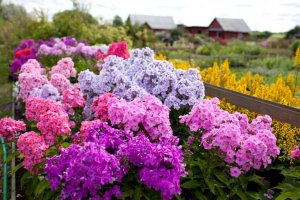
In my garden, I do this. First, I water the phlox over the leaves from a watering can or a hose. And then, while they are wet, I dust it with ash. Usually, you need to get rid of the unsightly white coating on the leaves. If the disease is too advanced, treat the bushes with the homeopathic remedy "Healthy Garden" or preparations with bacteria "Fitosporin", "Agravertin", "Iskrabio". Spray the plants thoroughly all over the bush, on the lower and upper sides of the leaves.
In the future, to increase the resistance of phlox to powdery mildew, do not thicken the planting. Weed the weeds regularly to keep the bushes well ventilated. An increase in the immunity of plants is also facilitated by feeding with a complete mineral fertilizer with microelements.
Planting and caring for annual phlox
A novice gardener should know: a new specimen of perennial phlox is obtained by dividing a bush, annual phlox reproduce by self-sowing, seedlings and sowing directly into the ground.
Having planted seedlings, you can get a blooming phlox in early June, which is a whole month earlier than sowing in the ground, and winter crops will delight in May.
Winter method: in the fall, as soon as foliage falls from the cherries, lay planting material into the prepared soil to a depth of 0.5 cm and cover them until spring.
Important! To get a beautiful and lush bush, pinch the top of a young phlox after the formation of 6-8 true leaves. The initial material for planting in the fall can be collected from your own plants when the foliage begins to fall:
The initial material for planting in the fall can be collected from your own plants when the foliage begins to fall:
In the flowerbed, choose a suitable phlox bush and cut it to the very root.
Bring into the room for ripening.
Dry by spreading on a towel or paper.
Gently shake the boxes and separate from the chaff.
Store the seeds until spring in a paper box.
Choosing a place for planting, soil
Phlox loves a lot of sun and does not tolerate rain, it is better to place it in elevated and well-lit places. Before planting, you need to carefully dig up the ground, remove the roots of the weed, add humus and a little sand. As a result, the soil should be loose and nutritious. Most importantly, no clay, phlox does not tolerate it.
Seed preparation for sowing
To grow healthy seedlings, the seed is prepared in a special way:
- Pour phlox seeds on a layer of cotton wool and cover them with another layer.
- Moisten cotton wool with water at a temperature of at least 40 ° C.
- Place in a warm place near the battery, if it is not too hot.
- Moisten constantly so that the cotton wool does not dry out.
On the fifth day, you can plant.
How to sow seeds for seedlings
Planting material soaked in a special solution for germination after 3-5 days is ready for planting.
One-year-old phlox for seedlings are sown in two ways:
- in a prepared deep container with a moist and loose substrate, spread the seeds on the surface;
- plant seeds in a nutritious soil mixture to a depth of no more than 0.5 cm.
Care for both options in the future is the same:
- cover them with film or glass;
- be sure to open every morning to ventilate and remove the resulting condensation;
- during the entire time before emergence, when the surface of the soil dries up, gently moisten it from a spray bottle.
After a week, you can see how phloxes emerge in different ways: laid out on the surface - all together, while others - will come out at different times and not all.
Note! Seedlings with good care look shiny and soft green

What a well-groomed seedling looks like
Seedling care rules
After the first shoots of phlox appear, it is no longer possible to close the box with foil. Watering young shoots should be moderate, trying not to overdry or flood. Excessive watering is most dangerous, as black mold can form.
The box with the young should be placed in the sun and turned towards the light in different directions so that they do not stretch out.
The temperature should be gradually reduced to 15 ° C, this hardens the seedlings.
Phloxes should be planted according to the lunar calendar on days favorable for planting.
Important! In areas more northern (Ural, Transbaikalia), where unexpected frosts are possible even in May, it is better not to rush to disembark so as not to kill young phloxes
Phlox fertilization recommendations
In order for paniculate phlox to bloom profusely, so that strong bushes can grow for a long time without transplanting in the same place, it is necessary to regularly fertilize and mulch the soil.
In spring, phlox starts growing early. Therefore, it is necessary to start feeding phloxes from early spring. As soon as the snow melts and the soil surface dries up a little, fertilizers should be applied: nitrate (30-35 g), superphosphate (50-60 g) and ash (40-60 g per 1 sq. M)
On the same day, it is necessary to carefully loosen the soil between the bushes, and then mulch (with fine rotted manure or humus) with a layer of 2-3 cm
In summer, phloxes are fed 3-5 times with a solution of complete mineral fertilizer at the rate of one bucket (10 l) per 1 sq. M. landings.
The first summer feeding of paniculate phlox is done in the second half of May with a solution of fermented mullein (at a dilution of 1:15), or a solution of chicken droppings (1:25). This nitrogen supplement serves to stimulate the growth of strong stems.
The second feeding of phlox is carried out in early June - with the same fertilizers, but 15-20 g of superphosphate and 10-15 g of potassium salt are added to each bucket of solution, or 20-30 g of ash instead.
The third feeding of phlox is done in early July - with the same fertilizers as the second, but with a slight decrease in the amount of nitrogen fertilizers.
The fourth feeding of phlox is done at the end of July with a solution of only mineral fertilizers: superphosphate 15-20 g, potassium salt 15-20 g (or ash 30-40 g) per 10 liters of water.
In mid-August, paniculate phlox of late flowering varieties can be given the fifth top dressing with the same fertilizers as the fourth. After that, the fertilizing feeding of phloxes is stopped so that the plants can complete growth before winter and do not give secondary growth of lateral shoots.
Top dressing should be done after a good rain that has sufficiently moistened the ground, or after preliminary watering of phlox bushes.
Organic and mineral fertilizing of phloxes must be applied under the base of the bush, without getting on the leaves. After feeding, the plants are watered with clean water to wash off fertilizers from the leaves and stems, which can cause plant burns.
How to plant phlox in the fall

For planting a plant, it is preferable to choose a not hot day, in summer it must be cloudy or plant flowers in the evening. Phlox can be planted with roots (cuttings), cuttings and seeds.
Choosing a landing site
Phloxes are planted in a sunny area of the garden, lacy shade from trees is allowed. Varieties with dark colored petals can burn in the bright sun, they are planted in partial shade.
Flowers must be protected from strong gusts of wind, placing them under the protection of buildings and shrubs.
The soil
The preparation of the soil in the flower garden for phlox begins 3-4 weeks before planting. The root system of a perennial does not penetrate deeply, so they dig up the ground by 15-20 cm.
Phlox loves loose, fertile and moisture-absorbing soils. Suitable for him are loams enriched with sand, peat and humus. More sand is applied to clay soils, and more humus to sandy soils. Average doses of additives per 1 sq. m:
- river sand 6 kg;
- high moor peat (not sour) 2 kg;
- humus (compost or rotted manure) 8 kg;
- ash 2 cups;
- phosphorus-potassium fertilizers for perennials 100 g.
For better dissolution of fertilizers in the ground, a few days before planting the plants, the garden is spilled with water. It is necessary to wet the ground to a depth of at least 20 cm.
Operating procedure
How to plant perennial phloxes in the fall:
Planting holes for phlox are planned at a distance of 50-70 cm from each other - the flower grows quickly and the bush needs a lot of space. The depth of the fossa is 20-25 cm, but it must be made wide, since the phlox roots are straightened to the sides, and not down.
The seedling is placed in the center of the hole so that the root collar of the flower drops 3-5 cm below the soil surface
The roots are gently spread to the sides.
The plant is covered with fertile soil, pressing the earth with palms to the roots. A mound of 12-15 cm is made above the root collar for protection from the cold.
Water the bush abundantly.
When the air temperature drops to minus marks, phloxes are mulched with peat or sawdust, with a layer of 20 cm.
The method described above is suitable for paniculata phlox, the most common type of phlox.
Features of planting phlox subulate
The plant does not tolerate high humidity in the root zone. A drainage layer (crushed stone or expanded clay) of 5-10 cm is poured into the landing holes for it.
The distance between the bushes of the styloid phlox is maintained at 30-40 cm, since the size of an adult plant is modest - a height of about 20-30 cm.
For better survival, the seedling or stalk is kept in a solution of root or heteroauxin.
How to plant by cuttings
Cuttings from phlox are harvested in late spring - early summer. The twigs are broken off from the base of the root, trying to get a stalk with a "heel" - a piece of part of the root. The twig is cut to a size of 10 cm and planted in a shady place on a bed with fertile and loose soil. So that the cuttings do not rot, they are sprinkled on the garden bed not with earth, but with sand.
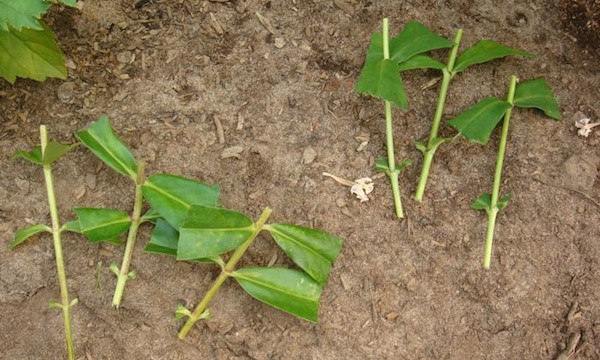
For better survival, phlox is watered with a root former and covered with a film greenhouse or plastic bottles.
Before the onset of autumn, cuttings are sprayed with warm water, watered, loosened the ground. In the fall, at the time set for planting, the plants are transplanted with a lump of earth to a permanent place.
Important! The phlox from the cutting must be deepened by 2-3 cm, compared to its growth in the garden. In winter, plantings are mulched with shavings or foliage.
Planting phlox seeds
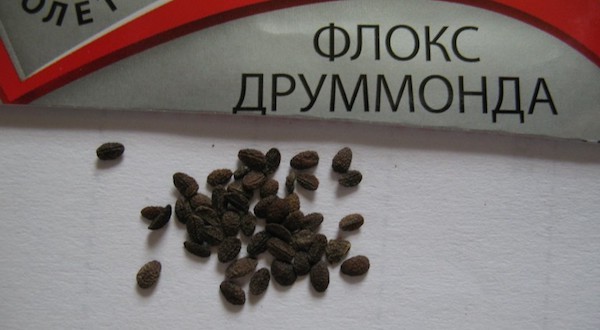
It is not difficult to propagate phlox by seeds, but this method is not often used. The fact is that the seedlings may not repeat the characteristics of the parental forms. During vegetative propagation, young plants are exact copies of adult flowers.
Phlox seeds are sown in the fall directly into the ground or, after mandatory stratification (cold treatment), in the spring for seedlings.
Sowing in winter is the easiest, but you should only resort to it if the seeds are obtained from plants that are adapted to the local climate.
You should not risk the purchased seeds of rare varieties, they are planted in the spring.
How to plant perennial phloxes in the fall:
- A phlox bed is prepared by digging up the soil and adding sand to the soil - about 8 kg per square meter.
- Poor sandy soils are cultivated with crumbly humus - up to 5 kg.
- The land is leveled and left alone until the onset of frost.
Phlox seeds are sown in the garden when the frost has already grabbed the ground - in November or even December. The fallen snow is swept away from the garden. Seeds are scattered over the surface, adhering to the 15 by 20 cm scheme.They are sprinkled with a pre-stored earthen mixture from garden soil and sand, with a layer of 2 cm.
In this form, crops are left until spring. The germination rate of perennials under winter sowing is 70%. In the school, seedlings grow until autumn, when they are planted in flower beds.
Spring change of a flower bed
After a long and frosty winter, nature is waiting for renewal. A flower garden on a personal plot is no exception.Spring is the best time for transplanting various perennial plants. Phloxes are among the ornamental crops, which are recommended to be transferred once every 5-6 years to another place in order to prolong their existence. Flowers have an average lifespan of up to 10 years if they are properly cared for.
In early spring, the weather is still rather unstable. Therefore, you should not rush to start work in the garden. It is better to wait until the thermometer rises above 10 ° C for 7-10 days in a row. Usually by this moment the snow melts and the earth has time to warm up a little.
The root system of phlox is located very close to the surface, so it is important that frosts do not repeat after transplantation, otherwise the plant will die
IT'S IMPORTANT TO KNOW!
You have tried a lot of products WITH HYPERTENSION?
If you continue to "bring down" the pressure with pills, after a while it comes back again. Hypertension is the main culprit in strokes and hypertensive crises. Find out what the renowned cardiologist Leo Bokeria advises to keep your blood pressure at 120/80 ...
Too late transfer of phlox to another place in spring is also fraught with unpleasant consequences. If the flowers do not have time to take root before the onset of the summer heat, then they will not be able to develop normally. At best, the plant will not bloom this season, at worst, it will begin to dry out and die.
The optimal time for transplanting phlox in spring is the period from mid to late April. If we are talking about late-flowering varieties, work on arranging the flower beds can be extended until mid-May. But it is better to complete the transplant before the beginning of the active growing season, since at this stage it is undesirable to interfere with the development of flowers or any other crops.
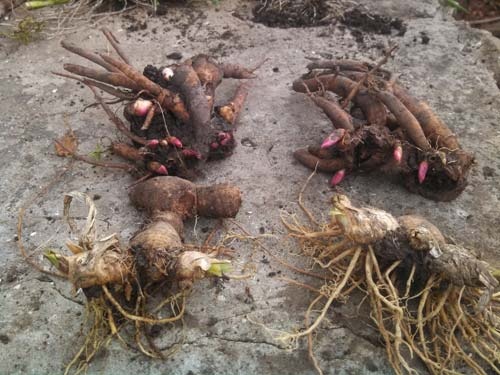
Ornamental culture prefers loose and light neutral soils. If the environment in the area is too acidic, it can be changed with lime or a little wood ash. Ash not only neutralizes the soil, but also structures it well.
In heavy clay soils, it is recommended to add washed river sand at the rate of 10 kg per 1 m². Sometimes it is mixed with crushed peat. These substances are evenly distributed around the perimeter of the site and dug up the ground to a depth of 15-20 cm. The use of sand and peat increases the drainage properties of the soil, prevents stagnation of moisture at the roots of plants. Too much water can cause mold, rot, and other fungal diseases.
When planting a plant with roots in open ground, you should correctly select and prepare a site in advance, taking into account the following recommendations:
- phlox are cold-hardy and drought-resistant crops that are very fond of good lighting, but do not tolerate overheating of the root system;
- the soil for the cultivation of phlox should contain a significant amount of humus;
- the presence of heavy soil with an excess of moisture on the site suggests taking measures to improve the quality of the soil and arrange drainage;
- phloxes react very badly to acidified areas, therefore, the pH of the soil should be determined in advance, and if necessary, liming should be performed;
- it is best to plant phlox on fairly light and fertile soils with good air permeability;
- the most suitable place for growing phlox in home gardening conditions is a plot in partial shade: in places that are too sunlit, phlox flowers fade very quickly, and the presence of partial shade allows plants to maintain the maximum saturated color of petals for a long time;
- the best option is to plant perennial flowers in tall flower beds or beds.



